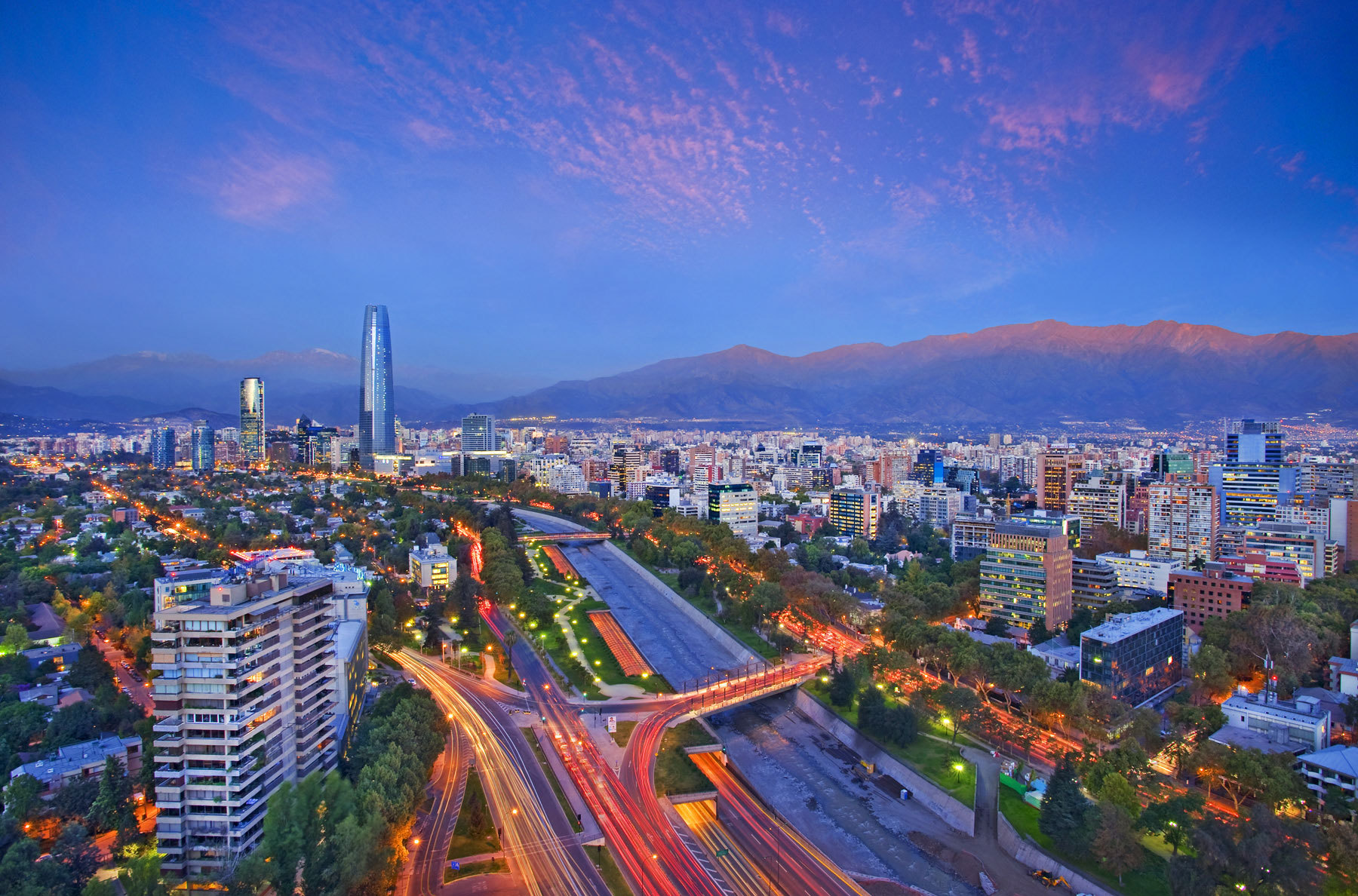Santiago de Chile, which is known as Santiago, was founded by the Spanish in 1541 and has been the capital of Chile since the colonial period. It is a vibrant city of more than six million people, but still find traces of their heritage in the colonial buildings and the neo-classical nineteenth century. This beautiful city has a hill on it, with the Mapocho River runs through it and the Andes in the background. There are various tourist attractions in Santiago de Chile, from religion unique and funky.
1. La Moneda
La Moneda, also known as the “Palacio de la Moneda” because it is the place the president of the Chilean office. Several other senior government officials also have offices in the neo-classical structure that occupy a whole block in the center of Santiago. The days of a peppermint construction was completed in 1828 and became the center of the Chilean government in 1845. It was a bomb during the coup that put Pinochet in charge in 1973. However, it has since been restored. Replace detention ceremony takes place every two days, with the day depending on the month.
2. Museum of Memory and Human Rights
Fiche de Chile on Human Rights is not always stellar, Museum of Memory and Human Rights. Open only for a few years; the museum is a monument to the Chilean who had their rights violated during the Pinochet regime (1973-1990). Perhaps ironically, the Chilean President Michelle Bachelet, Pinochet victims of torture, laid the foundation stone in 2008. The museum has a museum of instruments of torture used by Pinochet’s forces, letters from prisoners and the declaration of congratulations from family. At the entrance, the last poem of Victor Jara recorded at the entrance. The poet is one of the first victims of the Pinochet regime.
3. Gran Torre Santiago
Gran Torre Santiago surpass Santiago and very high, which can be seen from almost everywhere in the city. With 64 floors high, it is the tallest skyscraper in Latin America, and the upstairs was occupied in the southern hemisphere. It is 300 meters (984 feet) high and has six basements. Formally known as the Costanera Center Tower 2, it is part of a complex that includes the biggest shopping centers in South America. Approximately a quarter of a million people per day come here. You will find the observation deck on the top floor which offers 360 degrees of Santiago.
4. Museo Chileno by Arte Precolombino
Chilean Museum of Pre-Columbian Art or Museo Chileno from Arte Precolombino, has elements that date back 10,000 years ago. Precolumbian art includes not only Chile but also in the whole of South America and Central America. It started with a private collection and increased to more than 5,000 works of art and artifacts. It is composed of different materials, including metals, textiles, ceramics, bones and skin. Located in Santiago, an impressive art museum honoring indigenous peoples before the arrival of Europeans, especially in Spain.
5. Cerro Santa Lucia
A hill located in the center of Santiago, which is a remnant of a volcano 15 million years. Bukit originally named Huelén but was renamed in 1543 to honor St. Lucia when the Spanish conquistadors took the hill. For centuries it has been home to a powerful one or two, and many dissidents have either Roman or the other or do not deserve to be regarded as a Catholic. Bukit redesigned in the 19th century. Today it is a park, statues, fountains and a castle that has been renovated into an event center. You will also find some excellent views of Santiago.
6. Mercado Central
While the central market to sell more food, seafood is the main reason to go. You’ll find a variety of seafood from the Chilean coast length: fish, oysters, clams, mussels, scallops and more. If you prefer to eat seafood to buy, the market has a lot of restaurants. Central Market is a landmark of Santiago which has been in business since 1872. It is located in a large building with wrought iron accents – even the roof is made of wrought iron. Central Market is located near the Plaza de Armas, in the center of Santiago.
7. La Chascona
Nobel Prize-winning Chilean poet Pablo Neruda and had three houses; La Chascona is one – the others are in Valparaiso and Isla Negra. Neruda has a strange personality which is reflected in this house. Even the name, La Chascona, comes from a lover messy curly red hair. The shape of the houseboat is a magnet for tourists who come to see the kitchen, which looked like a ship’s cabin, and the lounge, which continued after the lighthouse. (Neruda loved the sea.) There is also a fairy tale garden in the back.
8. Barrio Bellavista
Barrio Bellavista is where everything goes, baby. This neighborhood of Santiago is the bohemian quarter of the city, a place where artists and intellectuals live, work and play. The most famous resident was, and remains, the home of Pablo Neruda, La Chascona, is one of the main attractions of Santiago. This is the most common parts of the city, with restaurants, funky shops, and art galleries. You can dance all night after nightfall in one of the nightclubs. Colorful old houses are plentiful in the tree-lined neighborhood. The weekend afternoon has a craft market, with semi-precious art in the new shopping lap.
9. Metropolitan Cathedral of Santiago
As the earthquake destroyed before the Santiago Cathedral, the Metropolitan Cathedral of Santiago is located in the Plaza de Armas for more than 260 years. Construction began in 1748, and the cathedral has dominated the square since. The neoclassical stone cathedral is regarded as one of the best examples of religious architecture in South America. A tower houses the remains of the first Chilean Cardinal. A Wooden door in the cathedral excavated around 1765. Inside you will find a richly decorated altar and the Museum of Sacred Art. Large ships are decorated add to the aura of inspiration.
10. Cerro San Cristobal
A hill north of Santiago that overlooks the city offers a magnificent view. Spanish conquistador named San Cristobal. At the top are an observatory and a statue of the Virgin Mary, which is part of a shrine dedicated to the Immaculate Concepcion. Pope John Paul II has blessed Santiago in the sanctuary of a small chapel; There is also a theater where the mass is celebrated. Cerro San Cristobal is also the largest park in Santiago, Santiago Metropolitan Park; Chilean National Zoo; A Japanese garden and two swimming pools.





